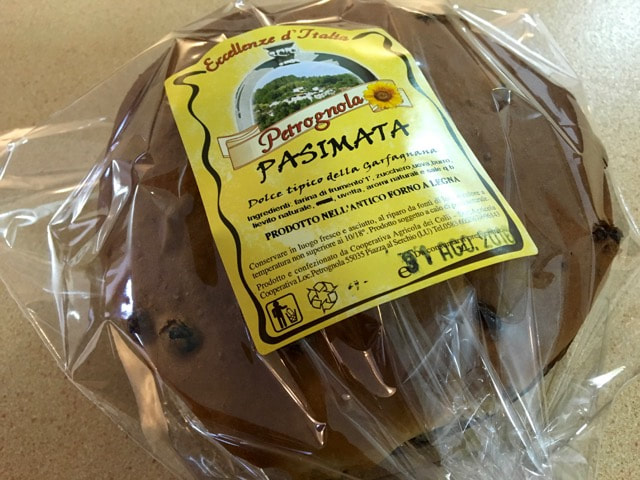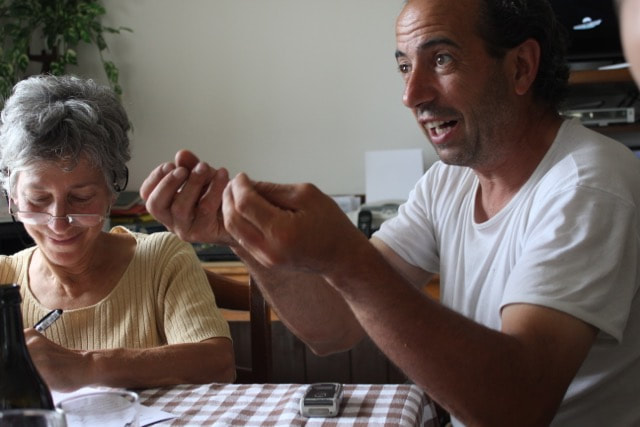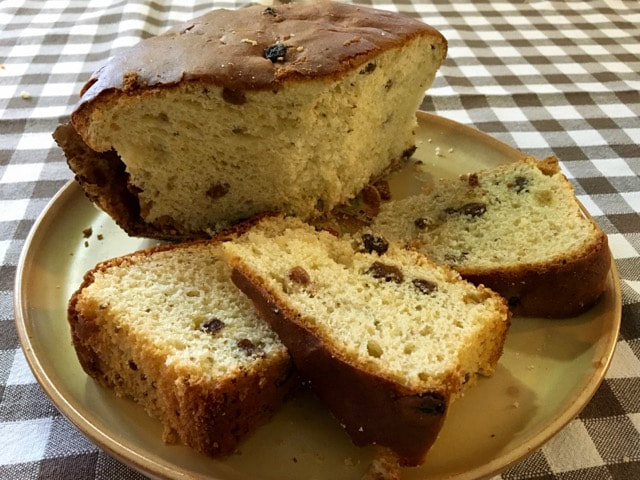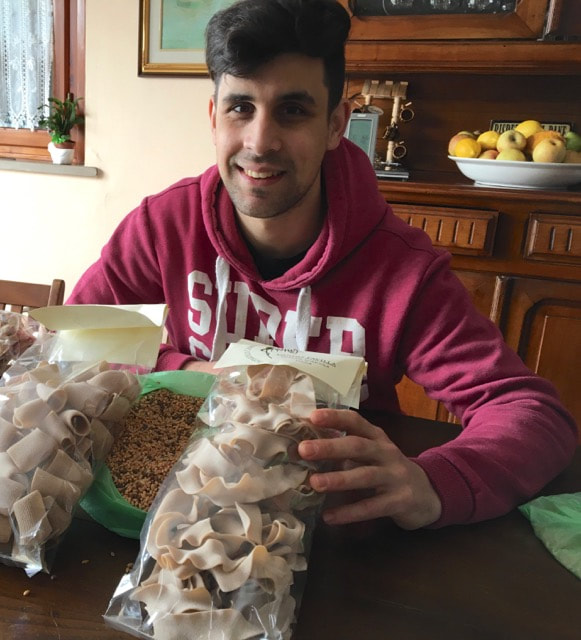|
Feasting is a way of celebrating special events, and many festivals have acquired a constellation of typical dishes. Often these are elaborations of everyday food, tarted up for the occasion. In many parts of Italy (maybe all, but I haven’t been everywhere) no meal is complete without bread, so what better food to make a fuss of. The Garfagnana has its own special Easter bread called pasimata. Paolo Magazzini, the village baker at Petrognola to whom I take my guests for bread lessons, recounted his procedure, the lengthy traditional way. You take flour, sugar, butter, eggs, milk and lievito madre (starter dough). Day 1 morning: mix all ingredients. 12 hours later: add more of the same ingredients except the starter dough. Day 2 morning: add more of the same ingredients except the starter dough. 12 hours later: add sultanas, aniseed, vin santo (sweet Tuscan dessert wine), chestnut-flavoured liqueur. Day 3 morning: light wood-fired oven. Bake a batch of bread. Put pasimata dough in round tins. After one hour, take bread out. Oven will be exactly the right temperature for pasimata. Bake pasimata for 40 minutes. Remove from oven and eat enthusiastically. The long rise over 48 hours allows time for the development of exceptional flavours and aromas. Today many people make a ‘fast cake’ version in an hour by substituting baking powder for sourdough starter. Next Easter I’m going to organise a blind tasting of the slow and fast versions.
I didn’t ask Paolo for the quantity of each ingredient, since I can get my fix from him. For those not so lucky, here’s a similar recipe from Castiglione in Garfagnana, a walled town which during the Renaissance was batted back and forth like a ping-pong ball between Lucca and Modena. Perhaps they consoled themselves between battles by eating pasimata.
0 Comments
I’ve long wondered how to incorporate the rich agricultural heritage of the Lucca plain into a tour. Watching a bean stalk grow would try the patience even of a very slow traveller. On Thursday I visited the organic farm Favilla in the suburbs of Lucca, where I was welcomed by Andrea, the owner’s son. As he spoke about his farm and its crops, the words tumbled out of his mouth and his face was alive with the enthusiasm he and his family devote to their project. The list of crops is long leaving no season without its fruits: wheat, vegetables and fruit. To find out more about the small group tour germinating at Sapori e Saperi Adventures, read the rest of my blog at http://slowtraveltours.com/blog/a-tour-sprouts/. Read to the bottom of the blog and you’ll find a special offer.
Save the dates: 2–9 July 2017. |
Email Subscription
Click to subscribe to this blog and receive notifications of new posts by email. AuthorErica Jarman Categories
All
Archives
October 2023
|
|
copyright 2017 sapori-e-saperi.com | all rights reserved
|
Website by Reata Strickland Design





 RSS Feed
RSS Feed



